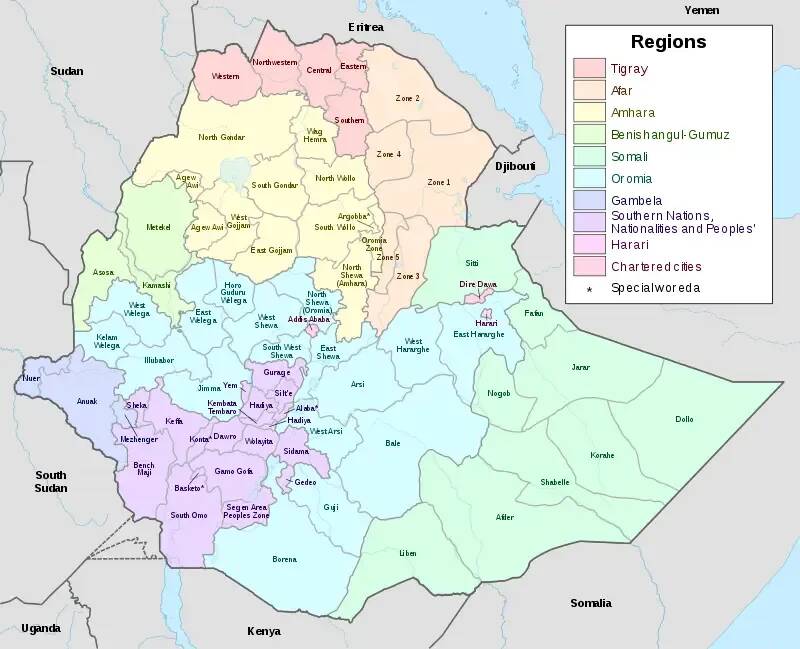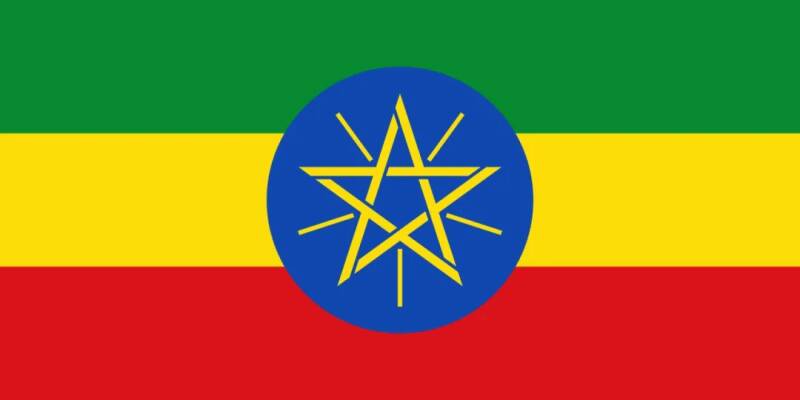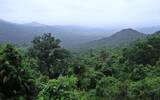Ethiopia| Introduction to Coffee Producing Areas Selected Coffee Beans
Ethiopia Ethiopia
Ethiopia is a mecca for coffee lovers. It is the birthplace of coffee and is now the largest Arabica coffee producer in Africa.
The Federal Democratic Republic of Ethiopia (The Federal Democratia Republic of Ethiopia) is located in northeast Africa, bordering Djibouti, Somalia, Sudan, South Sudan, Kenya and Eritrea. It is a landlocked country with a population of about 120 million and a land area of 1.1036 million square kilometers.

From top to bottom, the Ethiopian national flag consists of three parallel horizontal rectangles of green, yellow and red, with the national emblem in the middle of the flag. Among them, green represents fertile land, mild climate and rich plant resources, but also symbolizes hope for the future, while yellow symbolizes peace and fraternity, as well as the people's determination to build a country. Red symbolizes that the people are ready to shed blood and sacrifice to defend the motherland, the middle national emblem is a glowing golden five-pointed star on the blue round surface, blue symbolizes peace, the light represents prosperity, and the pentagram represents diversity and unity.

There are mainly mountain plateaus in Ethiopia, most of which belong to the Ethiopian plateau, accounting for 2% of the country's total. The East African Rift Valley runs through the whole territory, with an average elevation of nearly 3000 meters, which is known as the "roof of Africa". While the northeast and south are desert and semi-desert areas, accounting for 25% of the country's area.
The average altitude in Ethiopia is 2450 meters above sea level, which makes the annual average temperature in Ethiopia 16 ℃, which is roughly divided into dry season and rainy season, with annual rainfall of 1237 mm. The country is rich in natural resources, rich in water resources, high-altitude mountains and more than 50 volcanoes, which make the country an ideal area for coffee cultivation.
Coffee producing area
Ethiopia has several coffee producing areas, namely, Sidamo, Harald, Kaffa, Limmu, Lekempti, Tepi, Bebeka and Bale. Among them, several producing areas such as Yega Xuefei, Guji, Sidamo and Bebeca are relatively famous.
Sidamo: since 1995, Ethiopia has adopted a federal system, while the local government has replanned according to the major ethnic settlements and languages out of respect for the culture of all ethnic groups in the country. In this way, Sidama was placed under the jurisdiction of the new Southern National language Autonomous Prefecture, which was renamed as the original historical name: Sidama. But at that time, in order to strengthen the promotion of the uniqueness of coffee in the country, the Ethiopian government applied for a patent for the names of three producing areas in 2004, choosing the old name Sidamo ®as the registration of Cedama Coffee. Until now, domestic consumers have always been used to calling the coffee here "Sidamo". Sidamo straddles the fertile highlands south of Lake Awasa in the Great Rift Valley of East Africa, with an elevation of 1400-2200m and an annual rainfall of 1200-2000 mm. High altitude, sufficient Rain Water, pleasant climate and rich geological nutrients provide an ideal environment for growing coffee. There are many well-known treatment plants in the Sidamo production area, such as the Santa Veni treatment plant, the Gauss treatment plant and so on.
YirgaCheffe: Yega Sheffield is a small town northwest of Sidamo Province, located on the eastern edge of the Great Rift Valley of East Africa. It is also one of the highest altitude producing areas in Ethiopia, at an altitude of 1750-2200 meters. In ancient Chinese, Yirga means to settle down, while Cheffe means wetland, which is a coffee producing area because of its mild humid climate, abundant rainfall, fertile land and plenty of sunlight, which originally belonged to the Sidamo region, because the area can breed unique aromas of flowers and fruit, unpredictable and unique flavor of coffee beans.
Guji (Guji): the Guji producing area, which once belonged to the Sidamo producing area, was independently divided into a new producing area by the Ethiopian Commodity Exchange (ECX) in 2010 because of its excellent and identifiable flavor. The producing area is located in the south of Ethiopia, with towering mountains, highlands, plateaus, valleys and plains, complex and changeable topography, these rich landforms create a variety of microclimate, and have volcanic soil and dense forest. the average elevation is more than 1800 meters, and there is a large temperature difference between day and night, which slows down the growth rate of coffee fruit and enriches the flavor of coffee beans. There are also many small producing areas in the Guji producing area, such as Hambella, Uraga, Shakiso and so on, and Humberlain Fakui coffee beans are well known.
Bebeka: the Bench Maji producing area, also known as the Bebeca producing area (Bebeka), is the capital of the Banchimagi region and is located in southwestern Ethiopia, a region under the southern ethnic states, just a few kilometers from South Sudan. There is a famous coffee estate here, the Rose Summer Village Manor (Gesha Village Coffee Estate), and the rose summer variety trees of the Rose Summer Village are found in the wild forest of Banchi Maggie.
Qianjie Coffee Ethiopia selected Yega Chuefei Coffee Bean producing area: altitude: 1600-1700 m varieties: original species Heirloom treatment method: washing treatment flavor: jasmine orange berry lemon caramel
The Yega Chuefei coffee beans of Qianjie Coffee are washed and roasted lightly. Qianjie will use the proportion of V60Jue 1RV 15, 92 ℃ water temperature to cook, will smell jasmine, the entrance will have lemon acidity, orange, berry flavor, and caramel-like sweetness, fresh and smooth taste.
Important Notice :
前街咖啡 FrontStreet Coffee has moved to new addredd:
FrontStreet Coffee Address: 315,Donghua East Road,GuangZhou
Tel:020 38364473
- Prev

A year-on-year increase of 13%! Indian coffee exports surge but still affected by the Red Sea crisis
India is the first country in Asia to grow coffee, and its output ranks sixth in the world. Recently, coffee prices have been rising, and the reason for the price increase is that Vietnam has been hit by heat waves and drought, which has affected the production of Robusta coffee beans, created a supply crisis, and indirectly pushed up Arabica coffee prices. This situation is important for India
- Next

Four college students asked Starbucks to change the terms of their prepaid cards!
▲ Click attention| Daily boutique coffee culture magazine coffee workshop membership card recharge is common, as is the case with Starbucks Star Gift Card. Consumers can purchase Star Gift Cards according to their own needs, and can also enjoy certain discounts while recharging and spending. However, in actual use, some college students have found that when their star gift card is used,
Related
- Caught off guard! Starbucks '15-year-old store quietly closes!
- Naixue Drink drank a stone and claimed a claim was retaliated by the merchant?!
- What is the difference between a cake filter cup and a V60 conical filter cup? What are the advantages and disadvantages of the flat-bottomed filter cup brewing solution?
- What is the difference between fine coffee powder and medium coarse coffee powder? Do I need to sift out the fine coffee powder for making coffee by hand?
- Why does hot American coffee taste bitter? Difference in proportional concentration between hot American and ice American
- Is espresso stored overnight in the refrigerator harmful to your body? Is frozen coffee better than freshly ground coffee?
- What parameters and proportions of water temperature should be used to grind and brew fresh coffee beans? Why can't I drink freshly roasted coffee right away?
- Customers have "changed" Manner's new products! Shop assistant: Please don't mess around!
- Remove sockets in customer areas at Starbucks stores?! Netizen: I won't go if I really tear it down
- What is the difference between the taste steps of sun-dried coffee and washed coffee? Why is sun-cured coffee sweeter and washed coffee sour?

